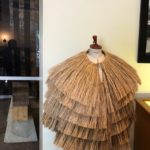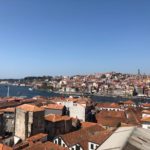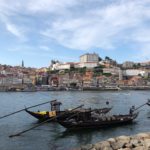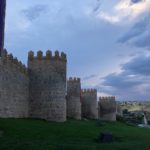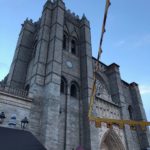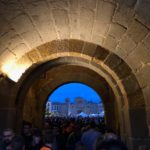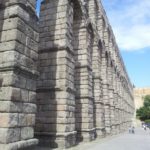Valuetur Interreg Project
This is an interesting INTERREG project between Spain and Portugal.
In Rio Tinto, the added value is related to the fact that space agencies from all over the world have conducted several tests here to test equipment, suits and other facilities for space travel. Thus, they used this opportunity to create a tourism product, making the visitor live an experience related to Martian suggestions.
In the Ria Formosa part, there is an area of high natural value, where it is possible to combine tourism and farming activities. You can then taste oysters in the estuary and enjoy the whole natural landscape, which is wonderful.
Title: Common strategy for the tourist enhancement of unique sites in the Andalusia-Algarve-Alentejo cooperation area.
Thematic objective
Protecting the environment and promoting resource efficiency. In other words, the overall objective of Valuetur is to implement a common transnational strategy to enhance protected areas of high natural, historical and cultural value in the Andalusia-Algarve-Alentejo cooperation area and exploit them in a sustainable way by generating economic activity through tourism.
Investment priorities
Protection, promotion and development of cultural and natural heritage.
The specific objectives are:
Define smart tourism development strategies in the protected areas with high potential of the Cooperation Area, according to a common methodology, and share and transfer the results of their implementation and evaluation through a transnational cooperation group.
To develop an innovative tourist offer in each action area, generating economic and social value and entrepreneurial dynamism, and to guarantee its accessibility and permeability with the territory through adapting infrastructures.
To make potential customers aware of the wealth and heritage of the tourist destinations of intervention, as well as the tourist offer developed, to attract tourists and visitors.
Categories of intervention
- Protection, restoration and sustainable use of Natura 2000 sites
- Cycle paths and trails
- Development and promotion of the tourism potential of natural areas
- Protection, development and promotion of cultural and public heritage.
Total project cost (indicative)
1.211.925,00 €
Total ERDF approved:
908.943,75 €
VALUETUR is a project co-financed 75% by the European Regional Development Fund, through the Interreg V A Spain-Portugal Cooperation Programme (POCTEP) 2014-2020).
Implementation period
01/07/2017 to 30/09/2022

Objectives
To enhance protected areas of high natural, historical and cultural value and exploit them in a sustainable way, generating economic activity.
The work will be carried out mainly in two protected areas of great singularity: Rio Tinto in Huelva and Ria Formosa in the Algarve, to recover and valorise their heritage and develop an integrated and attractive tourist offer in them, involving companies and entrepreneurs in the area.
By increasing tourism activity and promoting these two destinations, the number of visitors to these areas will increase, and their socio-economic development will improve. This is done through a common transnational strategy that creates synergies to learn more and achieve greater results.
Partners
– Huelva Provincial Council.
– Consejería de Agricultura, Ganadería, Pesca y Desarrollo Sostenible, Junta de Andalucía.
– Andanatura Foundation for sustainable socio-economic development.
– Mancomunidad de Desarrollo Condado de Huelva.
– Algarve tourist region.
Activities
1 Cooperation for tourism development according to a common methodology for strategy definition.
2 Investments for the structuring and connection, accessibility and enjoyment of tourism.
3 Revitalisation of tourism for local socio-economic development.
4 Actions for the promotion and marketing of tourist destinations.
5 Management and coordination
6 Communication.
Expected results
The main result of the project will be an increase in the number of visitors in the Cooperation Area and, more specifically, in the area around the Rio Tinto Nature Trail, the Ria Formosa Natural Park and the Huelva section of the Via Algarviana; the entrepreneurial fabric of these predominantly rural areas will be the main beneficiary, since the increase in tourism brings with it an increase in economic activity and, consequently, in the socio-economic development of the localities connected to these areas. As a consequence of this socio-economic development, the entire population of these areas will benefit from the project results.
The main products will be:
- Tourist development strategy for the Ria Formosa Natural Park (Algarve).
- Multi-competent transnational cooperation groups will meet periodically to transfer knowledge and experience while implementing the strategies.
- The tourist development of three areas: the Rio Tinto Natural Trail, the Ria Formosa Natural Park and the Algarvian Way through the province of Huelva.
- Conferences and workshops to inform and transfer tourism strategies to public and private operators in the area.
- Prototypes or pilot experiences of innovative tourism activities.
- The graphic identity of the main areas to identify them as tourist destinations: Ría Formosa and Río Tinto.
- Events for disseminating and promoting the developed tourist destinations at local, regional, national and international levels.
- Online dissemination and promotion tools for both destinations.
- Familiarisation trips for the knowledge of these destinations by the main national and international tourism influencers.
Sources
– https://www.poctep.eu/es/2014-2020/estrategia-com%C3%BAn-para-la-valorizaci%C3%B3n-tur%C3%ADstica-de-espacios-singulares-del-%C3%A1rea-de
– https://andanatura.org/proyecto/valuetur/

Corporate Social Responsibility in tourism?NH Hotel in Spain
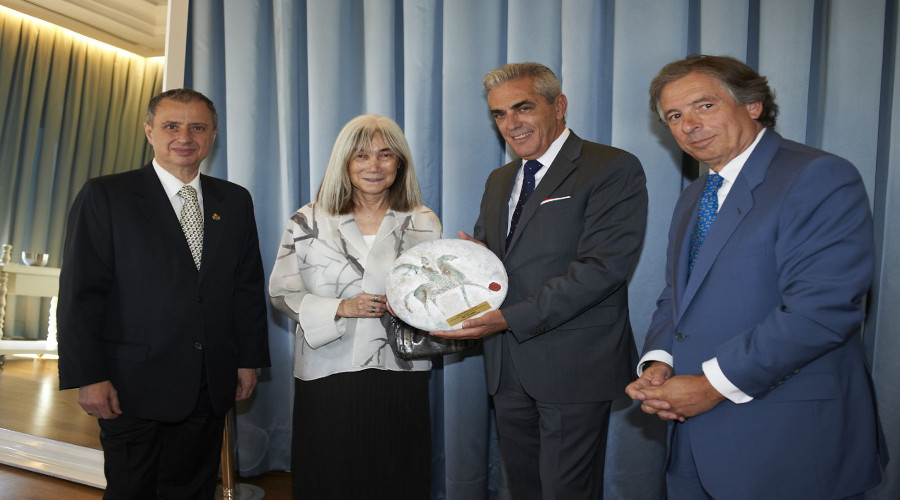
Hello, today I want to share some info from a company I have experienced during my life as tourist and I always felt innovative in its approach to sustainability and responsibility: Corporate Social Responsibility in tourism industry in Spain NH Hotel.
Founded in 1978 in Spain, NH Hotels ranks as one of the most important hotel firms. Nowadays, employing 20.000 workers and running 400 hotels in 26 different countries, NH is one of the top 25 hotel chains in the world and one of the main ones in Europe.
Moreover, the company is listed on the stock exchange market of Madrid since 1997 and it is the only Spanish firm in the FTSE4GOOD for CSR, and its business model is aimed at finding potential opportunities that contribute to the sustainable development of the firm, in order to be constantly growing in a responsible manner.
As one of the leaders in the urban hotel industry both nationally and internationally, NH Hotels has often needed to choose between profits and social responsibility. Some ethical challenges in which the company is involved are:
1.Contribute to protect the environment.
2. Build positive relationships with the communities in which NH operates.
3.Invest in employees’ training and education.
4. Engage other parties of the supply chain with their commitment.
Source:
1. We Dream Business A living gallery of business models that make business students dream http://wedreambusiness.org/

Only a quick look to their website is enough to understand they are investing in sustainability, responsibility and innovation. Reading it let discover that the chain has been awarded with a list of recognition for the following categories: employees, customers, shareholders, environment, society, & corporation reputation.
One of the most important achievement is the Outstanding Achievement Award in 2013 from the Global Business Travel Association (GBTA) for NH’s excellent sustainability commitment.
Sources:
2. NH Hotel website: corporate.nh-hoteles.es/en/corporate-responsibility-and-sustainability

Best practice in CSR – something for you to copy
One important choice from CSR Management is the review of its Code of Conduct with the aim of making it part of the company’s Corporate Social Respon-sibility philosophy and policies, emphasizing all of those aspects which define ethical behaviour.
Source:
3. NH Hotel website Code of conduct
Interested to know more about Corporate Social Responsibility?
Corporate Social Responsibility
Are you familiar with the GRI criteria for measuring corporate social responsibility?
The Wonderful experiences of a not adventurous traveler: North Spain & Portugal
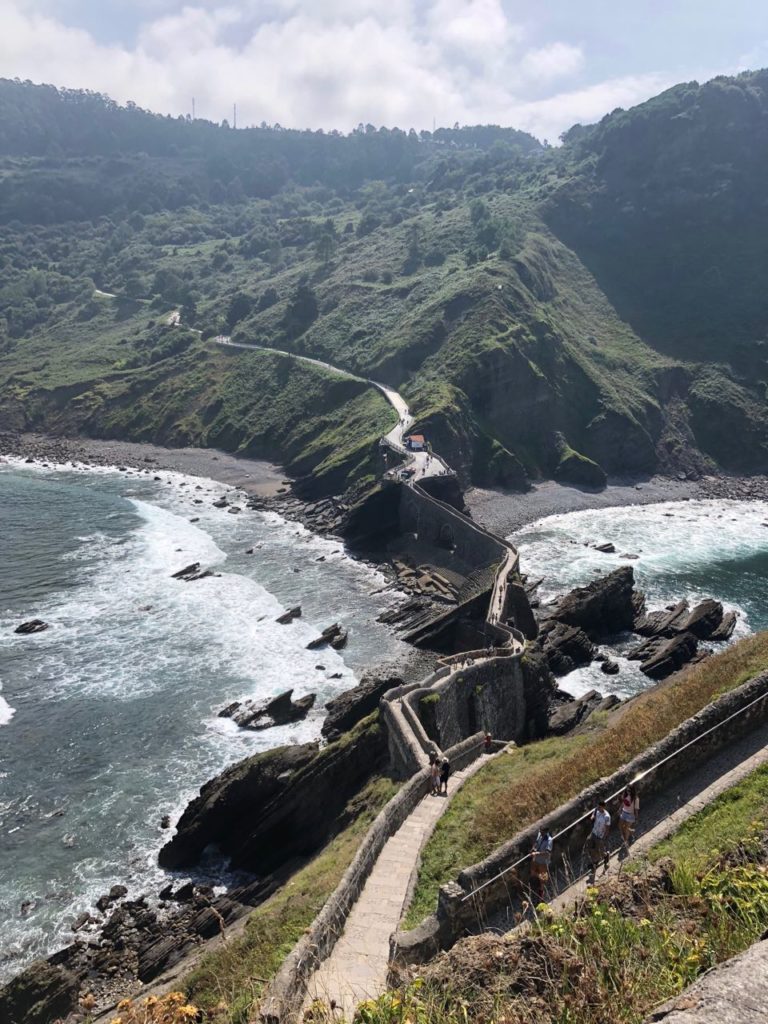
Hello Sustainable Tourism World community! I am back sharing a bit about my not adventurous travel experiences.
This time, I am talking about North Spain & Portugal, that I visited this September. I have to say from the sustainability point of view we (human beings with a normal lifestyle) are still far away to be able to do a sustainable holiday, but what I can tell you is we need to keep trying and do our best to get closer to the goal of sustainable tourism.
I want to be positive, so I will try to focus on the many positive aspects of the holiday adding only a few comments regarding what we still need to improve. Let’s start from the beginning end of August with Ale, my favorite travel partner :), I flew to Spain.
We started visiting Madrid, the beautiful and hot capital. Here I think we made it good, we decided to refresh our art knowledge and visited the Reina Sofia museum(Guernica beautiful as ever), the Prado Museum (I discovered the young operas of Goya The Threshing Ground or Summer is an example of the cartoons for the tapestries intended to decorate the Prince of Asturias´ dining room, produced in 1786), and a new entry the Museo Municipal de Arte Contemporaneo where we immersed ourselves in an early 20th century Madrid. We enjoyed very much having lunch with tapas after the cultural visits and getting used to the Spanish language again 🙂 and to be honest we enjoyed also the international chain hotel with swimming pool we booked from Italy because it was most of the time 34 degrees. It was very hot from 4 pm to 7 pm.

Of course, flying anywhere nowadays means using a regular airplane and producing a huge amount of CO2 and pollution. In my opinion, sustainable aviation should be a priority for anyone talking about and working in the sustainability sector.
Also renting a car was difficult, I was looking for a hybrid car, but the only models available were very expensive, Ale and I had to choose a regular car! This is not a way to build a sustainable tourism destination and incentive a sustainable behavior to travelers.
Second Stop was San Sebastian, or Donostia (in Basque) a coastal city and municipality located in the Basque Autonomous Community, Spain. Crossing the Basque country was a surprise very different from the region around Madrid and our accommodation Arima Hotel was the most beautiful of the entire holidays, the only 4-star hotel we booked and the more eco-friendly.
From the Arima Hotel website: the whole building is based on an innovative and ambitious concept of respect for the environment: cutting-edge technology that uses clean energy such as geothermal and aerothermal energy, cleaning water collection systems, water flow reduction filters and selective waste management, among other things. A project that is joined by suppliers and employees who share our green philosophy.
During my stay there, I discovered more, Arima means soul in Basque. Arima Hotel is surrounded by a natural space that invites its guests to relax, enjoy, shelter and experience the unequaled sensation of wellbeing, demonstrating that luxury and comfort go, at least, hand in hand with a natural and sustainable soul.
Having the certification “Passivhaus” ensures that the hotel consumes 70% less energy than another one built under conventional construction criteria. Passivhaus is a German construction quality standard focused exclusively on the high energy efficiency of buildings, reducing power requirements to a minimum.
For the first time, I found a proper recycling bin making it comfortable and easy to recycle.
Activities such as yoga, ebike tours, and the rooftop pool made the stay just perfect and having walked in the forest after the hot days in Madrid was just amazing.

Donostia is a beautiful town, a nice holiday place, there was also the Concha Flag, an annual coastal rowing competition held in the Bay of La Concha in Donostia in the two first week-ends of September. The event was held for the first time in 1879 as a new activity included in the San Sebastián fiestas programme.

Basque country surprised me with more:
Gaztelugatxe, an attractive path winds steeply down from Urizarreta to the base of the promontory, where a striking 3-arched bridge takes walkers across to the 241 steps that lead up to the chapel of San Juan of Gaztelugatxe. Known as a location for series Game of Thrones.

Bilbao, we decided to focus our visit at The Guggenheim Museum where I discovered and appreciated very much Joana Vasconcelos art. I am quoting The Guggenheim here: “Vasconcelos’s production contains references both to the popular culture of her country (appropriating the rooster of Barcelos, the heart of Viana do Castelo, and the ceramics of Bordalo Pinheiro) and to the most recent theoretical debates in contemporary art, especially those concerned with fostering viewer participation in the interpretation of artworks.
With an attractive sense of humor that shuns dogmatism, her work also explores issues of identity ranging from very intimate questions to universal sociopolitical themes linked to globalized postcolonial societies, such as migration or the exploitation of women.” I think this is the main reason why the artist and her work attracted me so much. There are other beautiful and important pieces at the Museum, but I liked to discover Vasconcelos works and her ideas behind them.
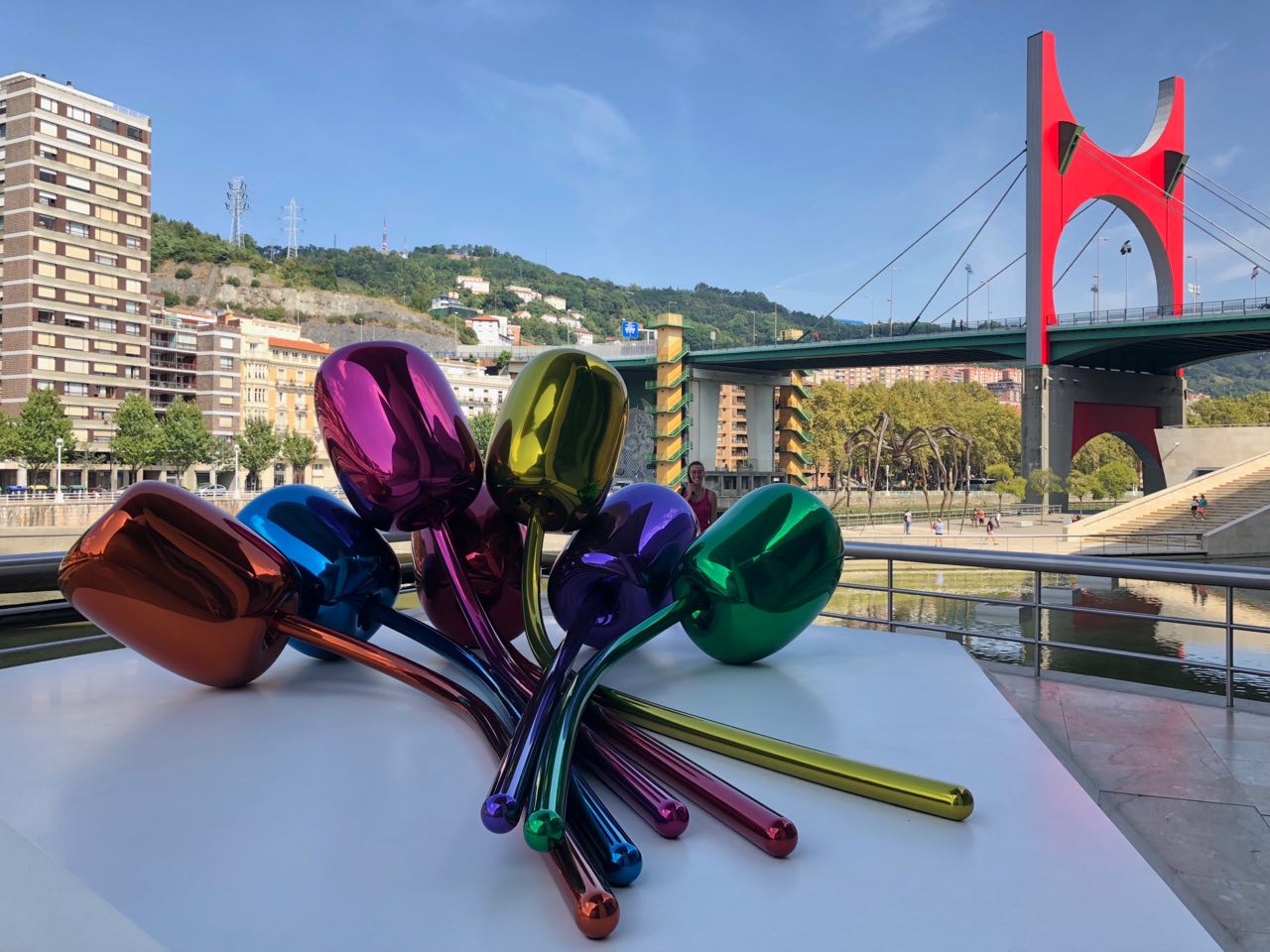
After an intense and full day, we arrived at Hotel El Jardin de Correjo, found in sawdays website. Sawday website looks for authenticity, warmth and character, places that embody the slow life and where hours of love have been poured into the tiniest detail to create those simple, personal joys that make something truly special. Hotel El Jardin de Correjo is one example of the beautiful places you can find into the platform, the description that attracted me is “The huge 1901 stable and hayloft have been stylishly re-crafted into a comfortable haven between the Cabuérniga Valley and the golden beaches of Comillas.” The website of the hotel is eljardindecarrejo.es I wanted to stay in a beautiful place far from the cities and Hotel El Jardin de Correjo was perfect it is a rural home full of art pieces and creativity surrounded by a heavenly garden and finally, I had vegetables for dinner! Thanks to this stay we also discovered an unexpected area in Cantabria that included a visit to the Bosque de Sequoyas at Cabezon de la Sal (same town of El Jardin de Correjo) and El Capricho de Gaudi in Comillas.
The history behind the forest is curious and very contemporary: the redwoods were planted in the 1940s on an experimental basis for the opening of the factory of Sniace, a pulp mill that decided to plant redwoods because these trees grew very quickly. In the end, after the years, when the trees grew and could be cut they were not interested in the felling and decided to leave them. It turned out that in the end Cabezon de la Sal, can enjoy a magnificent landscape. A large forest that delights visitors getting lost among about 850 redwood trees of almost 40 meters.
El Capricho de Gaudi in Comillas is another unexpected surprise from this region, El Capricho is a villa designed by Antoni Gaudí. It was built in 1883-1885 for the summer use of a wealthy client, Máximo Díaz de Quijano.
I quote here elcaprichodegaudi.com “The importance of the Capricho (and of the Casa Vicens) is that they are Gaudí’s first buildings and, consequently, very important works for the future of the architect’s career and essential for the study of the trajectory of the whole of his work and defining the style of its first epoch, which is distinguished, as LE Cirlot points out, by the Mudejar influence, by the alternation between this orientalist suggestion and medievalism, and by the progressive and growing appearance of the elements that correspond to the period of Gaudí’s maturity .” El Capricho is a wonderful building, a place full of creativity and beauty. I loved, in particular, the details of the balconies where is possible to seat directly on the iron and the fact that you can hear the music even outside, the villa lack a bit of privacy for my standards, but after all, it was built for the public exposure of his owner the lawyer Máximo Díaz de Quijano.
El Capricho along with the Palacio Episcopal in Astorga and Casa Botines in Leon this is one of his only three constructions outside Catalonia.

Casa Botines in León is another building I have seen during my holidays, I heard Leon is a monumental city, with a stunning historical center and it is true, the city of León is in the northwest of Spain. It is on the Camino de Sant Iago and has a vast cultural, historical and architectural heritage. We arrived in Leon through the Autovia La Ruta de La Plata, that is an ancient commercial and pilgrimage path that crosses the west of Spain from north to south, connecting Mérida to Astorga. The path is used by the modern A-66 and AP-66 freeways, as well as by the older N-630 national road. Above all the landscape we passed through was stunning, nothing to do with motorways in Italy! http://www.wikiwand.com/es/Autopista_Ruta_de_la_Plata
Unfortunately, Leon was the worst accommodation ever, the only hotel where I couldn’t find any attention to environment or guests and it was AC by Marriot.
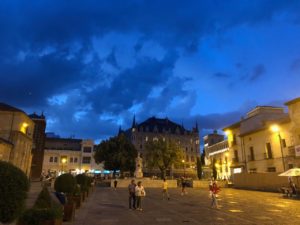
I briefly visited Santiago which was less traditional (+!) than expected, but to many kilometers and places already visited made me decide to escape quickly and reached our refuge in Galizia, where the Quinta de San Amaro welcomed us in a warm and relaxing atmosphere. We had also an aperitif by the pool and dinner, everything was just perfect!
Quinta de San Amaro in Pontevedra is a charming small Hotel, a magical place situated in the Salnes Valley, just a few kilometers from the best beaches in the Rias Baixas. I appreciated all the small corners the owners built, they show how passionate they are about the place: the dining room, the living room, the vineyards, the porch, the pergola, the prairie, the library, especially the traditional Galician granary. Everything was so perfect and relaxing that I did a bit of meditation before leaving towards Porto.
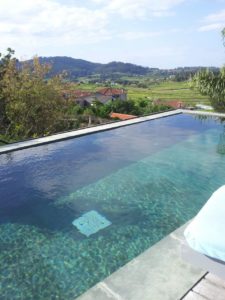
We reached Portugal in a couple of hours, Ale swam in the ocean, we had lunch by the beach and later we arrived in Porto, which was a great surprise! For Ale the best was learning more, visiting Porto Wine cellars of Taylor’s and testing Porto wine. In my opinion, walking around the historical center designed World Heritage by UNESCO since 1996 was just beautiful. I felt a bit overwhelmed reading about the number of churches, monuments, and places. I took it slow, I discovered the tourism in Porto is well organized there is also a newspaper for tourists written in English, Spanish and French where everyone can read the news, local people interviews and interesting information for visitors.
I have to admit I didn’t have time to get ready for everything to see and where to go before starting my summer holidays, but thanks to Ale, some basic information and a bit of luck we had an incredible time.
The final stops were Avila and Segovia. Avila was declared a UNESCO World Heritage Site in 1985, we found a rural accommodation 10 minutes from the town center. We were supposed to stop in Salamanca, but due to celebrations there the accommodation was either fully booked or too expensive (more than 400€ per night!), so we tried with Avila, while the place we found was not special, it was clean and very quiet San Miguel. In Avila town a big event was going on, we visited it during the Medieval Festival.
During the first days of September, the city regains its medieval image with stalls, haimas (berbere hostels), the fragrances of incense, rosemary, and cheese; canned goods, slave auctions, puppeteers, jugglers, knights, kings, monks, and friars occupy the streets and plazas of the historic center.
The latest stop of The Aqueduct of Segovia (or more accurately, the aqueduct bridge) is a Roman aqueduct in Segovia, a couple of hours from Madrid. The aqueduct bridge is one of the best-preserved elevated Roman aqueducts. Also, the cathedral of Segovia is beautiful and it is worth it a visit. We also had the best tapas ever for lunch in what seemed to be a local place, in fact, we were the only international tourists. This was a very nice way to finish the trip!
Fuerte Hoteles, Devotedly Focused On Responsible Tourism - 2013

At Fuerte Hoteles responsible tourism is at the forefront of our attention. Management of our policies regarding sustainability ensures that we remain true to our reputation as a dedicated environmentally friendly operation. Throughout our past and present expansion undertakings, we are and always have been pioneers in implementing responsible tourism. This is something we endeavor to maintain and improve every day. We truly consider the environment as an extension of ourselves. Conserving and respecting our surroundings has enabled us to enjoy beautiful surroundings, which we integrate into our hotels’ experiences.
Beyond ensuring our own actions are responsible, we focus our efforts into actions that give each of our hotels an authenticity that improves our integration into local cultures and improves customers’ experiences. We strive to immerse the Fuerte experiences with local information, cultural activities, typical native dishes and architecture that respects the customs of wherever our hotels are located. Our philosophy of management supports local people, businesses and cultures by raising awareness of local sustainable transport such as bike hire and trekking. By promoting local cultural activities such as concerts, festivals and expositions we are constantly aiming to be a beneficial influence for the communities that our hotels occupy.
We are strong believers that it is a misconception that environmentally responsible businesses are loosing profit from their green endeavors. Individually, our procedures may seem small, but it is the combination of all of our efforts across multiple hotels that make the real differences apparent. Our impact on the environment has a direct influence on our business decisions. Finding a sustainable balance that works equally with the environment, the economy and local society and culture is our goal. The non-stop implementation of our new measures ensures that we are one of the most socially responsible of hotel groups of our kind.
We have multiple strategies in place to monitor our carbon footprint. Our records are consummate with our lowest level at Hotel Fuerte Conil-Costa Luz, where the average amount of CO2 released per person as a result of our functions is only 9.61 Kgr.CO2. We hope that our efforts to create an environment at all of our hotels that encouraged this way of living will inspire our guests. Tourists can easily never spare a thought to how hotels can impact the local economy, so the fact that in the last three years we have spent over £1,700,000 per year on locally produced food and beverages is a testament to our strong beliefs. Our support for local businesses and culture doesn’t mean higher prices for our customers.
We will continue to commit to ensuring our activities are carried out in a manor that preserves the natural environment and as we grow and expand as a business – our environmental management will remain at the front of our minds to ensure we preserve our world to the greatest of our capabilities.
Agrotravel Responsible Tourism, Vitoria-Gasteiz, Basque Country - 2012

Agrotravel Responsible Tourism is a different travel agency specializing in responsible tourism also offers consulting and training services in responsible and sustainable tourism.
Convinced that tourism is a means of unity and understanding between different peoples and cultures, four years ago we started this adventure, the adventure of starting a travel agency and offer different services in Consulting and Training of responsible and sustainable tourism because since Agrotravel Responsible.
Tourism bet for Responsible Tourism principles as the best way to travel, we have committed to work for the development and mutual understanding of peoples using tourism as a tool.

Make travel a learning experience for both the visitor and for the visited, always starting from egalitarian vision that respects others and their culture.
And time tells us that we are on the right track. Shared experiences with our customers and the growing realization that there is greater awareness of the benefits of responsible travel reassures us.
But there is still a long way to go and since we are committed to Agrotravel Responsible Tourism well in training and awareness activities in defense of sustainable practices, solidarity and friendly to our environment, this is our philosophy and essence (DNA) of our company.
Since our company Agrotravel Responsible Tourism, we invite you to explore the responsible and sustainable tourism, a unique way to travel for people who want new experiences, prepare each travel as if it were our own. And we do it in a close, thorough and personal. In total empathy with all people who believe in a Just and Sustainable Tourism, encouraging consumption of services provided by the local population.
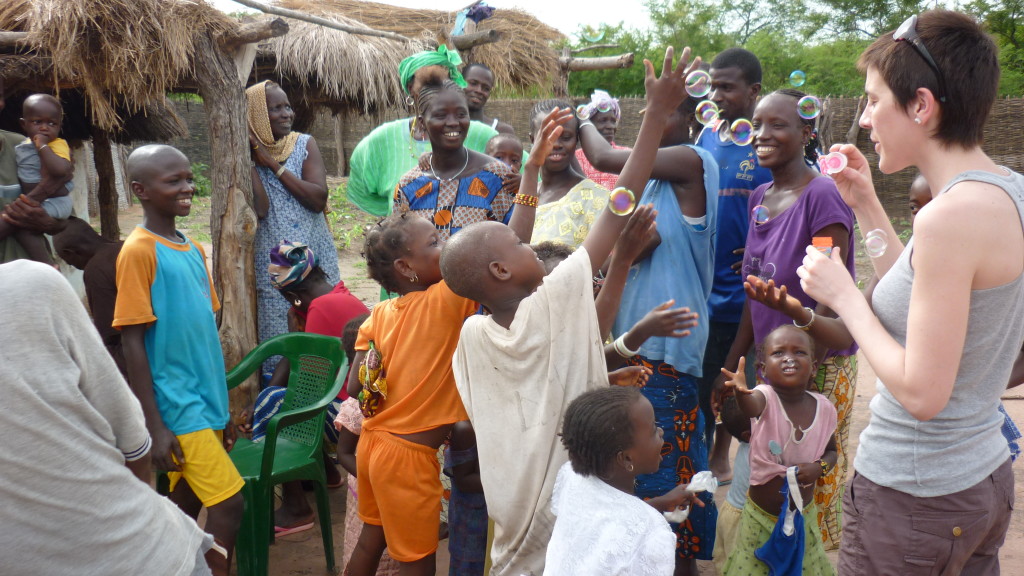
If you want advice, hire a hiking or responsible trip in several places on the planet, Agrotravel Responsible Tourism is at your service to give you a truly unique travel experiences”.
Roberto – Agrotravel Responsible Tourism
Sustainable tourism in Menorca, a UNESCO Biosphere Reserve - 2012

Sustainable tourism in Menorca, one of the UNESCO Biosphere Reserves
Last summer, I visited Menorca Island.
While looking for information I found out that this small Balearic island is also a UNESCO Biosphere Reserve. I really liked it, and I would like to tell you more!
I need to improve and add information, so if you want to help me, please share photos, videos, or any other interesting information!
For more information about Menorca also have a look at the new page with this website address or go through the menu:
– http://sustainabletourismworld.wordpress.com/unesco-sitesnational-parks/menorca-unesco-biosphere-reserve/
– UNESCO sites/National parks –> Menorca UNESCO Biosphere Reserve.


